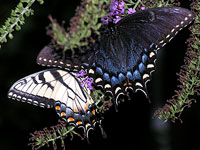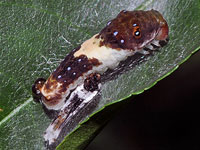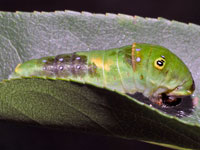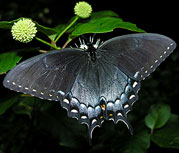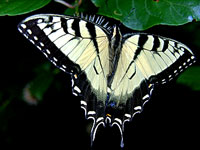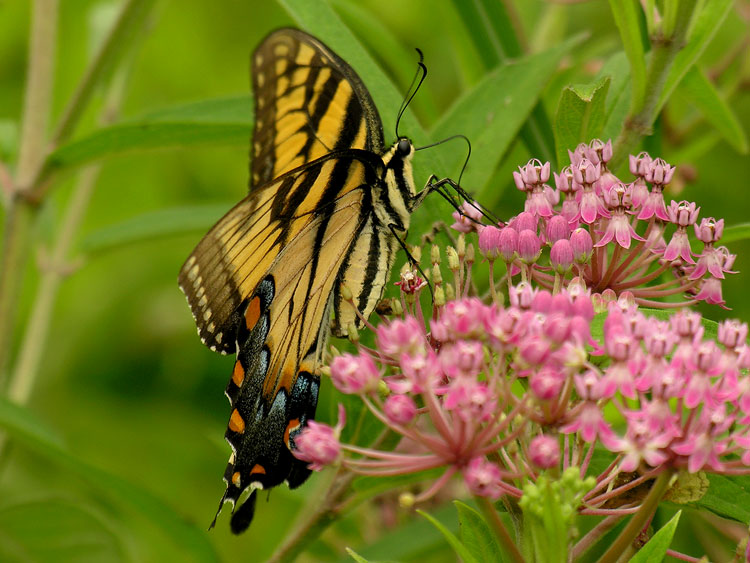
| Photos © Kim Hosen; suburban backyard, Woodbridge, VA
Text by Amy Wilson |
||
Eastern Tiger Swallowtail Virginia’s state insect is the Eastern Tiger Swallowtail and one of our biggest butterflies. Tiger Swallowtails are commonly found in deciduous woodlands and along their borders, including parks and neighborhoods, where they feed on the nectar of wild and garden flowers from Spring through Fall. Both male and females have black stripes on their yellow forewings, but the female differs in the amount of blue on her hind-wings. Indeed, the female comes in two color schemes, or morphs; dark and light. The darker female is almost completely black or dark gray with yellow spots on the rear of her fore-wings and predominantly blue hind-wings. She is often confused with the Spicebush Swallowtail, but orange spots on the underside of her hind-wings and a black band dividing the blue, also on the hind-wings, sets the Tiger apart. The lighter schemed female looks much like the male but with more blue on the hind-wings. Females lay their eggs singly on the leaves of woody plants, mainly tulip trees (Liriodendron tulipifera) and wild black cherry (Prunus serotina). The caterpillar emerges wearing a dark brown and white camouflage but soon becomes bright green with a swollen thorax and faint blue dots on its abdominal segments. It also has black-and-yellow false eyespots to ward off curious predators, and the caterpillar will rear up and extend two red horns from its osmeterium if pestered, resembling a Hognose snake. The display is accompanied by the secretion of a foul-smelling odor. |







